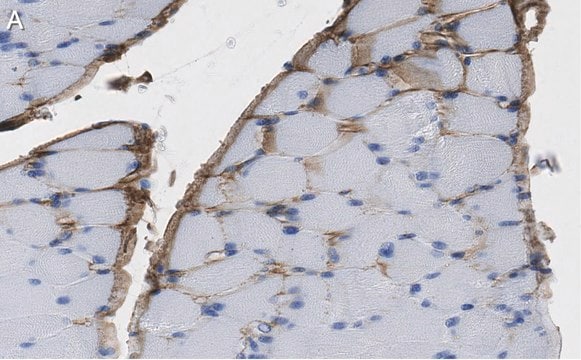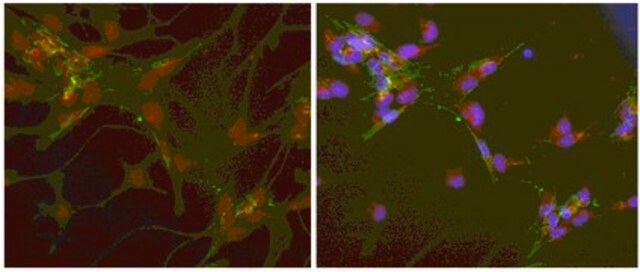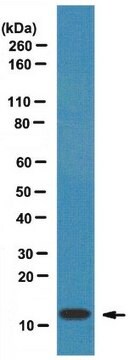F4771
Monoclonal Anti-Fibroblast Surface Protein antibody produced in mouse
clone 1B10, ascites fluid
Synonym(e):
Fibroblast Surface Protein Antibody, Fibroblast Surface Protein Antibody - Monoclonal Anti-Fibroblast Surface Protein antibody produced in mouse
About This Item
Empfohlene Produkte
Biologische Quelle
mouse
Konjugat
unconjugated
Antikörperform
ascites fluid
Antikörper-Produkttyp
primary antibodies
Klon
1B10, monoclonal
Mol-Gew.
antigen 43-72-80 kDa
Enthält
15 mM sodium azide
Speziesreaktivität
human
Methode(n)
complement-mediated cytotoxicity assay: 1:500
flow cytometry: suitable
immunohistochemistry (frozen sections): suitable
Isotyp
IgM
Versandbedingung
dry ice
Lagertemp.
−20°C
Posttranslationale Modifikation Target
unmodified
Allgemeine Beschreibung
Immunogen
Anwendung
Immunofluorescence (1 paper)
Immunohistochemistry (1 paper)
- immunofluorescence
- flow cytometry
- immunohistochemistry
- immunoblotting
Biochem./physiol. Wirkung
Zielbeschreibung
Hinweis zur Analyse
Haftungsausschluss
Sie haben nicht das passende Produkt gefunden?
Probieren Sie unser Produkt-Auswahlhilfe. aus.
Empfehlung
Lagerklassenschlüssel
10 - Combustible liquids
WGK
nwg
Flammpunkt (°F)
Not applicable
Flammpunkt (°C)
Not applicable
Hier finden Sie alle aktuellen Versionen:
Besitzen Sie dieses Produkt bereits?
In der Dokumentenbibliothek finden Sie die Dokumentation zu den Produkten, die Sie kürzlich erworben haben.
Kunden haben sich ebenfalls angesehen
Unser Team von Wissenschaftlern verfügt über Erfahrung in allen Forschungsbereichen einschließlich Life Science, Materialwissenschaften, chemischer Synthese, Chromatographie, Analytik und vielen mehr..
Setzen Sie sich mit dem technischen Dienst in Verbindung.









